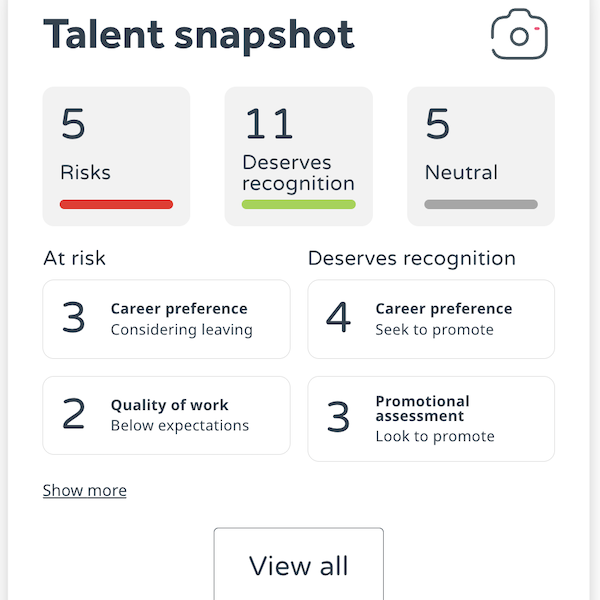It’s official – employee engagement is low, and getting worse. If your company is able to work out how to improve it your employees put in more effort, are more loyal, are more absorbed in their work and are more profitable, but this just does not happen for most people.
In fact a recent Gallup analysis (1) of staff engagement found that just 27% of employees are engaged with their work. Since it also found “a strong relationship between employees’ workplace engagement and their respective company’s overall performance“ that means that around 70% of companies are doing worse than they could, because they don’t know how to engage their employees. At a time when the world economy needs all the help it can get, this poor engagement of the workforce is doing us no favours at all.
Now, imagine we are not alone in these turbulent economic times – suppose the government on Mars is also worried about employee engagement, has been watching our TV news and decided to send down a little green CEO to look at how we’re handling the same problem. Reading the Wall St Journal or the Financial Times, she might well be able to understand output figures, sales volumes and costs straight away – we’re subject to the same physics as the Martians (as far as we know), so our maths could be similar. But she’ll be left wondering: how is employee engagement defined, in real terms that we can actually use to improve our profitability?
Coming from another culture, with a different history and language, how would a Martian make sense of Employee Engagement, or work out how to motivate a team from a Human perspective? After trawling through the countless thousands of blog posts, websites and management textbook entries on the subject (very thorough, these Martians) the first thing that would be obvious (on regaining consciousness) would be that we are, as a culture, spending an enormous amount of time, effort and money chasing something that we have not really defined.
Some suggest that this is a result of employee engagement being a ‘bottom-up’ concept, originating in pop psychology and only later being formalised by researchers. The same thing happened with other concepts that are now commonplace, like burnout, and this is a problem because “if one does not know what one is measuring, the action implications will be, at best, vague and, at worst, a leap of faith”. (2)
So, while Wikipedia has a brave attempt to summarise the main angles on employee engagement (3) there are as many definitions as there are academics who write about it and practitioners who use it, and this is frustrating for our Martian, who just wants to know how to use the concept to improve staff engagement and get the economy back on its feet.
This really matters, because engaged employees
- generate more profit (4)
- often have a deep, positive connection with their work, and are likely to be attentive and absorbed at work (5)
- are consistently more productive, safer, healthier, and less likely to leave their employer (6)
But the worst part is that just as we are realising how important engagement is, we are also finding out how rare it is:
- only 30% of the global workforce is estimated to be engaged (1, 7)
- employee engagement is declining, despite our now having some understanding of it (8)
So we have two problems here, and they are interlinked. We can’t exactly put our fingers on what engagement is, but we know it is important; and we need to do something to improve it so as to improve the loyalty, productivity, health, etc., of the workforce, but without a clear idea what it consists of this is hard.
We’ll have to wait some time for an ‘official’ definition because, like any emerging concept in psychology, the definitions will likely become more complicated and diverse rather than less in the near future, as theorists work through the phenomena related to engagement and experiment with models to explain them.
So if you are in a hurry to do something that works, here’s a concrete, sensible suggestion that you can implement straight away. Ask yourself if this makes sense, and if it does give it a spin:
People basically want to work, but there are three things that need to be right if that work is going to go well:
- Connection – they’ll need to be well connected with their own work specifications, their colleagues, the company aims and through that to the customer.
- Ability – they’ll need all the necessary knowledge, skills and backup resources to enable them to do the work
- Motivation – they’ll need to know that working that way – using their knowledge and skills to achieve something for the company and the customers – will meet their own physical and emotional needs in ways that make them want to work.
If Engagement is a mixture of these three things, you’ll need a way to find out how your workplace measures up, and that’s where TeamInsights comes in. It not only measures how well your environment provides the essential nourishment for staff engagement, it also outputs suggestions for how to create improvement, for each team or individual. It allows you to track the performance of individuals and teams over time, and so enables you to put in your management effort where it will really make a difference.
This makes it possible for your people to engage, and it is available free of charge for two of your employees. The first release is due in December and you can sign up now at http://www.performancereviewpro.com/team-engagement-and-motivation-software/
There’s nothing to lose – and everything to gain – from finding out how to unlock the performance of an engaged workforce.
References:
- Gallup: http://www.gallup.com/poll/150383/Majority-American-Workers-Not-Engaged-Jobs.aspx [accessed 5/11/2012]
- Macey and Schneider, in Industrial and Organizational Psychology, 1 (2008), 3–30.
- http://en.wikipedia.org/wiki/Employee_engagement [accessed 5/11/2012]
- Czarnowsky, M. (2008). Learning’s role in employee engagement: An ASTD research Study. Alexandria, VA: American Society for Training & Development.
- Saks, A. M. (2006). Antecedents and consequences of employee engagement. Journal of Managerial Psychology, 21, 600-619
- Fleming, J. H., & Asplund, J. (2007). Human sigma. New York: Gallup Press
- Harter, J. K., Schmidt, F. L., & Hayes, T. L. (2002). Business-unit-level relationship between employee satisfaction, employee engagement, and business outcomes: A meta-analysis. Journal of Applied Psychology, 87, 268-279.
- Czarnowsky, 2008 ibid.


